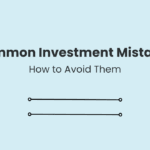Ultimate Guide to Tax-Saving Investments
Paying taxes is important, but why pay more when you can legally save money? The government allows us to invest in certain schemes that help reduce tax while also growing our wealth. Here are some easy-to-understand options you can use to save on taxes.
Equity-Linked Savings Schemes (ELSS)
ELSS funds
are mutual funds that help you save tax under Section 80C, allowing deductions
of up to ₹1.5 lakh. The best part? They have the shortest lock-in period of
just 3 years and have historically given high returns (12-15% per year).
However, since they invest in the stock market, the returns are not guaranteed.
If you are comfortable with some risk and looking for high growth potential,
ELSS can be a smart choice for tax-saving and wealth-building at the same time.
Public Provident Fund (PPF)
PPF is a
government-backed scheme that lets you save tax under Section 80C. It has a
long lock-in period of 15 years, but the interest earned (around 7-8% per year)
is completely tax-free. It’s one of the safest ways to grow your money over
time. You can deposit between ₹500 and ₹1.5 lakh per year, making it flexible
for different income groups. Additionally, partial withdrawals are allowed
after 5 years in case of emergencies, making it a good balance between safety
and accessibility.
National Pension System (NPS)
NPS is a
great option for long-term retirement savings. You can claim tax benefits up to
₹2 lakh under Sections 80C and 80CCD(1B). Your money is invested in a mix of
stocks and bonds, which gives better returns than traditional savings options
(around 8-10% per year). The only drawback is that you can withdraw the full
amount only after retirement. At retirement, 60% of the corpus is tax-free,
while 40% must be used to buy an annuity. This ensures that you receive a
steady pension during your retirement years.
Unit Linked Insurance Plans (ULIPs)
ULIPs
provide both life insurance and investment benefits. The premium you pay is
eligible for a tax deduction under Section 80C. While ULIPs have a lock-in
period of 5 years, they offer market-linked returns and long-term financial
security. Unlike traditional life insurance, ULIPs allow you to switch between
equity and debt funds based on market conditions, giving you more control over
your investments while ensuring life coverage.
Sukanya Samriddhi Yojana (SSY)
SSY is a
special savings scheme for a girl child’s education and marriage. Parents can
invest and claim tax benefits under Section 80C. It offers high, tax-free
interest (around 8% per year) and matures when the child turns 21. The scheme
ensures that your daughter’s future is financially secure, and partial
withdrawals are allowed after she turns 18 to help with education expenses.
Senior Citizens Savings Scheme (SCSS)
This is a
safe and steady income option for people above 60. The government-backed scheme
gives around 7.4% interest per year, and the investment amount qualifies for
tax deduction under Section 80C. The lock-in period is 5 years. It is one of
the best options for retirees looking for a fixed, reliable source of income
with government protection.
Tax-Saving Fixed Deposits (FDs)
If you
prefer a simple, low-risk option, a 5-year tax-saving fixed deposit is a good
choice. You can claim a tax deduction under Section 80C, and the returns are
around 6-7% per year. However, the interest earned is taxable. It is ideal for
those who want a guaranteed return but are okay with paying tax on the interest
income.
Health Insurance
Medical
expenses can be unpredictable, so having health insurance is important. The
premium you pay is eligible for a tax deduction under Section 80D—up to ₹25,000
for yourself and your family, and ₹50,000 if you have senior citizen parents.
Besides tax benefits, health insurance protects your savings from unexpected
medical expenses, ensuring financial stability.
Home Loans
Buying a
house? You can claim a tax deduction on both the principal repayment (up to
₹1.5 lakh under Section 80C) and interest payment (up to ₹2 lakh under Section
24b). First-time homebuyers can get extra benefits under Sections 80EE and
80EEA. This makes homeownership more affordable while reducing your taxable
income.
Voluntary Provident Fund (VPF)
If you are a
salaried employee, you can contribute extra money to your EPF account through
VPF. The returns are around 8% per year, and both your investment and interest
earned are tax-free. It’s a great way to grow your retirement savings, as
contributions are directly deducted from your salary, ensuring disciplined
savings without additional effort.
Conclusion
By choosing
the right investment options, you can reduce your tax burden while growing your
money. A smart mix of ELSS, PPF, NPS, and health insurance ensures a
tax-efficient and financially secure future. Start planning today and make the
most of your hard-earned money!










